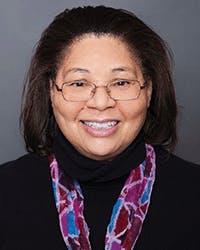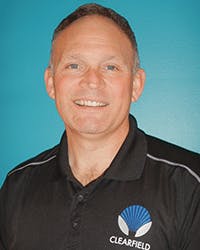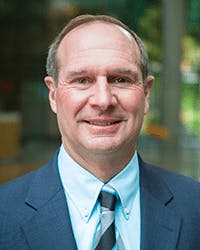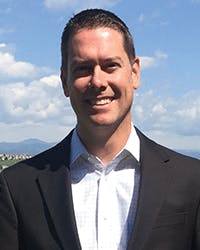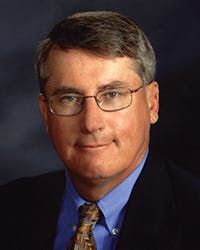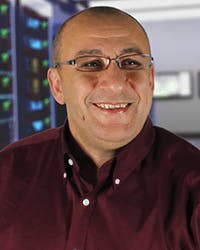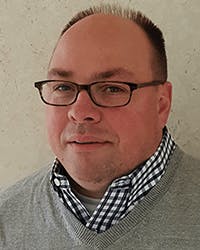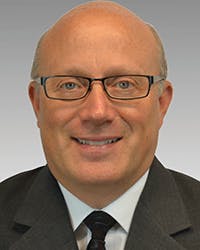Learn what our Influencers have to say about CAF II, smart machines and the IoT, power, the Millennial workforce, predictions for ICT’s future, and posing their own ICT question for us to consider. We asked our forward-thinking professionals to consider these questions, and to answer 3 of them. Read their insights in this last of a 3-part series.
CRYSTAL BALL TIME
If you had a crystal ball, what would the industry look like 25 years from now?
CAF II
In Connect America Fund Phase II, the framework favors fiber-only builds. As imagined, there is pushback from wireless and satellite providers.
Is wireless and satellite a more cost-effective model than FTTx? Why or why not? What are the most practical and efficient methods to meet the objectives of Connect America Fund Phase II?
POWER
Talk about the role of power and sustainability in today’s ICT landscape compared to how those things will impact the networks of the future.
MILLENNIAL WORKFORCE
How will stalwart companies evolve in anticipation of and in response to the Millennial workforce and their willingness to move quickly from one job to another?
SMART MACHINES AND THE IoT
Predictions:
• By 2018, 20% of all business content will be authored by machines.
• By 2018, 6 billion connected things will be requesting support.
• By 2020, autonomous software agents outside of human control will participate in 5% of all economic transactions.
• By 2018, more than 3 million workers globally will be supervised by a "robo boss."
The relationships between machines and people are becoming increasingly competitive, as smart machines acquire the capabilities to perform more and more daily activities. "Smartness" is now everywhere in the work environment, with consequences that are difficult for enterprise decision makers to foresee. (Source: www.gartner.com)
Share your thoughts about the above, and what ICT professionals need to do to stay relevant in these "robo" times of change.
Crystal Ball Time
I sure hope that I will be around in 25 years to atone for my predictions! I do believe that our industry has a unique ability to embrace the changes brought about by technical innovation and progress. For example, even as traditional phone lines become things of the past, we have embraced the ability to move larger amounts of data around at faster speeds.
Our industry will provide the means to have an artificial neural network (ANN) of interconnected products stemming from the ever-growing Internet of Things (IoT). These nodal points of information will be captured and processed for autonomous decision-making by machines that operate on a set of rules or parameters designed to have a positive impact on humans across multiple disciplines. We will be able to work and be entertained in both a virtual and augmented reality. Along the way, our industry will continue to struggle with issues of privacy and the morality of relegating decision-making to machines.
I am excited for the next quarter century in the ICT industry as information-processing speeds continue to grow.
Smart Machines and the IoT
Looking at how they have enabled better efficiencies, it becomes clear that staying relevant requires one to embrace the "smartness" of machines. As ICT professionals we should always strive to improve both ourselves and the work we do. Machine "intelligence" provides us one of the most impactful ways to improve.
In order to adapt, we should not view machines as a competitor but rather as an ally, helping us create more efficient ways to do things. What appears novel today will simply become "business as usual" in the future.
Historically, employers sought justification for having a computer at work. Those same employers today explore how we can be effective at work without a computer. Change should be embraced as the enabler of a more efficient future.
What are the challenges with pushing fiber deeper in the network?
We have seen that, as fiber moves deeper in the network, many passive management solutions become outdated. Products that served well for a long period of time need to be replaced with new devices designed for the application at hand. The installed cost of these new products has the potential to be lower as unnecessary
features are eliminated and quality improves with application-specific designs.
[toggle title=”Biography & Company Profile” load=”hide”]Mike Grice is Chief Technical Officer (CTO) at All Systems Broadband (ASB), responsible for setting ASB’s technology vision. His organization is responsible for product innovation along with technology and product roadmaps, product management, and business development. Mike has over 28 years of telecommunication experience with an outside plant focus. The first 20 years of experience began at Raychem. Previous roles include product development, product management, and sales. LinkedIn Profile: /michaelgrice
CAF II
When it comes to any network build initiative, the most practical and cost-effective model is one that is full of flexibility and opportunity. The more options you have, the faster and more efficient you can be. When building or enhancing a network where you have limited facilities, the availability of supporting structure can be challenging. It’s essential to have accessible resources that help offset those challenges. AT&T is an integrated solutions provider. Meaning, we have the ability to provide multiple types of connectivity solutions to our customers.
Smart Machines and the IoT
In these "robo" times of change, ICT professionals need to continually develop their skill sets to meet the demands of the fast-evolving industry. Smart machines are logic driven. However, ideas and creativity are not always logical at the onset. People drive these out-of-the-box ideas with creativity. As an industry, we need to work together to increase this creativity and encourage innovation. So often we get busy handling day-to-day tasks, like reading and answering emails. Plan time to think and imagine. Embrace what robotics can do. Who knows, it may just free up time for you to envision the next big thing.
What kinds of things should you consider when building a fiber network?
When building a fiber network there are many things to consider. Strategically planning when, where, and the amount of fiber is key. It’s important to determine the types of services you plan to offer, how much fiber you need to provide those services, the kind of equipment that will be connected to the fiber, and if it is compatible with multiplexing equipment, which helps you to determine how to size the fiber you are placing. As with real estate, location is the most important factor to consider. Having a large capacity in the wrong place doesn’t do you any good.
Globally, AT&T has more than 1,053,240 route miles of fiber. Our expansive network reaches upward of 1 million business locations and 1.6 million living units nationwide have access to AT&T GigaPower. Having a robust network enables us to connect people everywhere they live and work.
[toggle title=”Biography & Company Profile” load=”hide”]Sabrena Lampley-Talbert is the Director of Midwest Planning, Construction and Engineering for AT&T. Sabrena is responsible for loop technology deployment, capacity planning, fiber plans and administration of Outside Plant Feeder facilities for 5 Midwest States. She has more than 15 years of telecommunications experience with AT&T and holds a bachelor’s degree in Business Administration and an MBA. She is passionate about mentoring and developing others and is an active participant in several mentoring programs.
Follow our news on Twitter at @ATT, on Facebook at http://www.facebook.com/att and YouTube at http://www.youtube.com/att. www.about.att.com[/toggle]
CAF II
The Connect America Fund Phase II does offer some interesting points of contention, between wireless carriers and fiber providers, but FTTx is a more cost-effective model. The bandwidth requirements will always increase, and building a fiber network that can sustain and grow with community requirements is a much more efficient investment by the CAF. While fiber deployments remain the most significant aspect of this initiative, wireless backhaul, either to macro towers or small cells, is important and served by the FTTx model.
Fiber is able to connect many rural locations to towers or small cells — cost-effectively and without much disruption to local communities — thereby expanding network reach and ensuring future bandwidth capacity potential.
Millennial Workforce
Hiring and retaining valuable staffers is top-of-mind for any company. The Millennial workforce might be restless when it comes to their career, but with Millennial talent comes fresh ideas and, in this industry, many are eager to be part of a growing, relevant, and lucrative field.
Companies must be agile, open to new ideas, and set aside resources that enable follow-through. Businesses must also rely on employee reviews and reward programs, and maintain an innovative culture.
At Axiom Fiber, we hire individuals who are team players, hard workers, and innovative thinkers. We strive to create an environment where personal and professional growth is encouraged and hard work rewarded.
In what aspects do real estate and telecom merge? How can service providers best accommodate the growing needs of real estate developers?
In an IoT age, access to reliable and fast connectivity is essential. Real estate developers and managers are recognizing the commoditization of Internet access. Developers and consumers alike are choosing locations to build, lease, and/or buy property, based off of one simple question: What are the ISP options?
It is essential for service providers to work symbiotically with real estate developers to optimize network connectivity in key areas. Axiom Fiber was founded on the fact that bandwidth capacity needs are growing exponentially, and even in New York City — where the population, commerce and number of buildings are staggering — there are still pockets where reliable Internet access is lacking.
Whether you are helping to establish a "smart" city or providing connectivity in rural or urban areas, service providers and real estate developers alike must work together to strategically optimize networks for consumers.
[toggle title=”Biography & Company Profile” load=”hide”]Patti Paulo joined Axiom Fiber Networks with over 15 years of Telecom Operational experience, having held various senior level roles at XO Communications, RCN Metro, and Glowpoint Inc. Her responsibilities involve driving the traditional Telecom Operational functions, which include providing long-term technology vision that supports and aligns with the company’s goals and strategies, business plans, operating requirements, and overall efficiencies by focusing on innovation and client adaptive measures.
Crystal Ball Time
In 25 years, virtually all those of working age in the developed world will have grown up fully in the Internet era. The concept of "dead zones", where there is no Internet connectivity, will be a fading memory. IoT will be in full stride, and augmented reality will be mainstream. Digital connectivity will no longer be an option, but will be an essential part of the fabric of society.
What this means for our industry is that ubiquitous wireless coverage will have to be built. Wired infrastructure to support that coverage will be required. The number of connected devices and their integration into our environment and even our bodies will multiply and demand new ways to manage security and protect privacy.
Smart Machines and the IoT
Many see the increasing smartness of all things as a threat. As was true when machines started to do the work of people hundreds of years ago, success will come to those who can see that every problem solved by automation opens up new areas that only human ingenuity and guidance can address.
The proliferation of smarter devices and their increasing integration into our lives opens up demand for even more data coverage, network reliability, connection speed, interoperability, integration assistance, security, and privacy management. More forms of content and entertainment and collaboration and commerce will be possible. With automation creating these possibilities, ICT professionals will remain relevant if they see every task taken over by a smart device as a step up to see the next opportunity.
Will there ever be enough bandwidth?
Since the advent of data networking, the demand for bandwidth has continued to increase. Higher video resolutions and the implementation of "big data" infrastructure are current examples pushing traffic demands higher. Indeed, the growth in connection speed requirements between machines seems unlikely to slow down.
However, there may be such a thing as enough bandwidth to each person. Biologically speaking, if the connection speed to us is enough to fully stimulate every nerve, and the delay to the Cloud is not humanly perceptible, a completely virtual reality is possible. At that point, the Cloud can create any enhancement to
the connected experience without having to transmit additional information. Driven mostly by what we can see, bandwidth-to-the-person may never need to exceed about 1 Gbps.
[toggle title=”Biography & Company Profile” load=”hide”]Tim Doolittle is an industry veteran with background in all aspects of data network operations and network design. As Director of the IP Backbone Network Reliability Center, Tim is responsible for the reliability and stability of CenturyLink’s IP infrastructure. This network consists of over 200 POPs across the globe supporting over 6M consumers, 200K business customer circuits, and 55 Data Centers. Tim also has experience in hardware, software, and system design of network communication equipment.
Crystal Ball Time
I read an interesting statistic that said 65% of elementary school students’ future jobs aren’t a reality yet. Nobody can predict the future, but if you peel back the layers of the onion you can see trends. Today, 80% of the webs traffic is streaming video. I believe that this trend is going to continue to increase. Everyone wants to immerse themselves in their video experience. Instead of sitting in front of a large screen and watching a movie or sporting event, you’ll have an entire room where you’ll be surrounded by it. How will all the bandwidth needed for a virtual reality experience be delivered to consumers? There is really only one answer and that is fiber.
CAF II
Currently satellite and wireless technologies can provide the bandwidth speeds mandated by the FCC. The question is, are they a viable long-term solution? As bandwidth consumption increases exponentially year after year, the ability for satellite and wireless to deliver reliable high-speed services will become increasingly difficult. Satellite will always have the challenge of overcoming latency issues. Whereas cellular carriers are currently preparing for future high-speed requirements by shrinking their towers wireless footprint and driving fiber all the way to the tower. A good long-term solution is to build a scalable fiber network that can both serve FTTH and have the ability to serve as the backbone for a wireless network
Turnkey Solutions
Should product manufacturers offer engineering, contracting, and project management services as part of their portfolio? Or would it be better for them to partner with companies that specialize in such services, and refer providers to them?
We would all like the convenience of having one bill each month for everything. The downside to having one bill is that we don’t really know if we’re getting our money’s worth. Would you ask the company that you buy your toothpaste from to do your dental work? So, where’s the issue? There is a big difference between producing products and providing services. The best solution is to have partnerships between the manufacturer and the engineering company. However, since the customer wants the ability to pick up the phone and make one call to relieve their pain, one company has to step up and take the lead.
[toggle title=”Biography & Company Profile” load=”hide”]With more than 22 years of telecommunications industry experience, Brian Schrand is a technical expert, responsible for working with Clearfield customers — helping them achieve the most cost effective deployments of FTTp networks. Previously, Schrand was Senior Specialist for Network Engineering, Construction and Operations at Cincinnati Bell Telephone (CBT). While at CBT, Schrand held various management positions including OSP Construction, Installation, Information Technology (IT), and OSP Staff. Prior to CBT, he assisted in engineering and constructing the City of Cincinnati’s first fiber network.
Plug-and-play solutions are being called upon to reduce labor at the time of installation. But traditional plug-and-play solutions put an added burden on network design, requiring extensive site engineering to ensure proper lengths are called out. The new frontier in plug-and-play is Clearfield’s labor-lite technologies that are more forgiving in the required pre-engineering. Labor-lite products take the reduced need for labor and skill level needed all the way back to the pre-engineering stage.
Laying out the backbone of the network with Clearfield’s FieldShield Pushable Fiber, FieldShield StrongFiber (the industry’s first 900um OSP drop cable) and with pre-terminated, field-assembled (not spliced) connectors, simplifies and speeds up fiber installations and maintenance and reduces the need for slack storage, the nemesis of traditional plug-and-play technology. www.SeeClearfield.com[/toggle]
Crystal Ball Time
We will live in a disconnected but fully connected world. Wireless technology will allow us untethered movement, but we will be within reach through a broadband network. The network will be more dynamic, transparently maintaining connections as we transition from home to work. To be fully connected, companies will offer solutions that include traditional voice, video, and data services, but also offer value-added integrated services like security, energy management, and transportation. Some of these services are available today but must be purchased through a myriad of providers. In the future, these services will be delivered through a sophisticated integrated ecosystem, which will be transparent to consumers and businesses, and purchased through a single provider.
Millennial Workforce
The Millennial workforce presents a significant challenge and a great opportunity. Nothing spurs organizations to change, adapt, and take action faster than the competition. In many ways, all companies are competing for the best and brightest this generation has to offer. Millennials come into the job full of energy and with high expectations. They expect to be heard when they express ideas, and recognized for their contributions. They want open and honest relationships, are team players, and expect others to reciprocate. Companies that fail to provide this environment risk losing the most competent of this generation. Catering to the Millennials can make all organizations better.
With the growing bandwidth demands and the rapid evolution of network technology, what is the biggest challenge facing the industry?
All service providers are struggling to deliver the appropriate network technology cost effectively, quickly, and in the correct location to meet customers’ bandwidth needs. This becomes more complex because of the variety of technology at their disposal (4G/5G, small cell, Wi-Fi hot spots, and fiber networks) that they are required to be familiar with. The problem is further compounded because engineers are planning and designing networks in unfamiliar geographies due to mergers, acquisitions, or consolidations. Fortunately, engineering companies are beginning to integrate technologies such as digital imagery, lidar, and GIS, to assist in the planning and design processes. These technologies allow them to work remotely, reducing field visits, costs, and time to market.
[toggle title=”Biography & Company Profile” load=”hide”]Randy Frantz is the Director of Telecom Solutions at Esri. He has more than 33 years of experience in telecommunications engineering and operations, including: senior vice president of product marketing for Axient Communications, vice president for Cox Communications™ new product operations in the Arizona market, where he launched its telephone, digital television and DOCSIS cable modem services, and director of network design for Bell Atlantic International, where he was responsible for business development in central Asia, Europe, and Russia.
Crystal Ball Time
Our industry continues to evolve so quickly that it is nearly impossible to predict how it will look in 25 years. However, if there is one thing that we can all plan for in the future, it is change. As leaders within the industry, we must continue to be flexible and provide a stable support structure for change to occur. Additionally, we must be sensitive to what is influencing our business, and be open to the opportunities that are ahead.
Millennial Workforce
Like every company within the industry, Level 3 experiences high employee replacement costs. While attrition overall is unavoidable, it can be mitigated with focus on employee development opportunities. I believe that the flexibility desired by millennials creates a unique challenge, but also an opportunity for our industry. As our workforce continues to evolve, so must companies to provide an environment that is increasingly supportive of employee development. This environment will allow all employees, including Millennials, to cultivate a broadened skill set and advance their careers. In doing so, we will provide the growth opportunities that all employees desire, and avoid costly employee-replacement costs. In addition, we will continue to develop an educated and highly skilled workforce that will drive the improvements and innovations necessary to move our industry forward.
Power
In my role as Vice President of Operations, part of my responsibility is managing the cost to operate Level 3’s facilities throughout North America. Generally, all providers across our industry are significant consumers of power, and are continuously exploring options to reduce overall power usage. Level 3 is no exception as we continue to invest in improved technology and network consolidation to offset the continued growth necessary to operate a global network.
In comparison to the world, North America continues to maintain lower than average energy prices. However, Europe continues to experience increases in the market partially as a result of increased focus on renewables. At Level 3, we continue to pursue renewable power options, and make investment determinations based upon the financial returns that they provide. The market for renewables for North America has increased as we continue to see improved technologies that make renewable energy more financially appealing, and I believe we will continue to see further innovations in the very near future.
[toggle title=”Biography & Company Profile” load=”hide”]Jeff Polachek is Vice President, Operations at Level 3 Communications. In this role, Jeff has ownership of OSP deployment and maintenance, network implementation, and infrastructure management. Over the course of his career, Jeff has been a proven leader in driving key corporate initiatives to streamline business processes and provide an improved customer experience. Jeff has had multiple leadership roles within engineering, planning, and operations throughout the course of his career and is a graduate of the Pennsylvania State University College of Engineering.
CAF II
The $10 billion CAF II would be best served by FTTx to bring broadband to rural America. While wireless and satellite would no doubt be less expensive to roll out, wireless and satellite cannot meet the need for increased bandwidth speed as technology advances, leaving rural America at a disadvantage to urban America. An FTTx build-out for rural America would benefit everyone, increasing broadband reach and speeds — improvements that would drive economic growth and allow for additional future network expansion.
Millennial Workforce
The Millennials, according to a 2015 Gallup Poll, are the least-engaged part of the workforce at 29%. Feeling less engaged is probably the reason for their willingness to change jobs.
If companies want to retain this talent, some changes may need to occur. According to a US Chamber of Commerce survey, 74% of Millennials said that Work-Life Balance was the most important consideration for a career. Companies need to respond to this desire for balance.
The second most important was a Sense of Purpose, making a positive difference in the world. We are lucky in our industry; we make a positive difference with deploying faster networks enabling communications and knowledge sharing, making the world seem smaller and more connected.
By responding to key concerns, companies will be able to retain the young, talented workforce who will be tomorrow’s leaders.
How is the push for fiber deeper into the network affecting your business?
Technology evolution increases the need for bandwidth speed to support streaming video and smartphone apps. Wireless is a great complementary technology alongside the fast fixed fiber networks. However, to get the broadband speeds needed to keep up with consumer demands, fiber is the answer.
MaxCell® can increase conduit capacity and override existing cables and innerducts, greatly reducing construction costs. MaxSpace® is a construction service that extracts rigid HDPE innerduct from around operating cables and recovers space, allowing the placement of new pathways of textile innerduct. New fiber backbone cables can be installed in existing conduit structures that were once considered full.
The more cost-effective construction methods are, the easier it is for companies to make the decision to expand their fiber network. We see a bright future ahead for fiber networks, and fully expect MaxCell and MaxSpace to be part of the solution.
[toggle title=”Biography & Company Profile” load=”hide”]Jerry Allen, PhD, has been in Outside Plant Construction Industry for 33 years. Dr. Allen has 15 patents on OSP Products and Systems. With his mechanical engineering degree from Trine University, Dr. Allen has developed products and systems that allow maximum use of conduit space, enabling more cables to be placed more effectively and to be installed at lower placing tensions. Dr. Allen was the recipient of the 2013 Harry J. Pfister Award for Excellence in the Telecommunications Industry, given by BICSI, for his innovative solutions for the Telecommunications Industry.
MaxSpace® is a new, patent-pending, No-Dig technology and construction method that safely removes existing innerduct from around active fiber optic cables with virtually no load on the cables and no interruption of service. As the innerducts are removed, cables migrate to the bottom of the outer conduit. Once all innerducts are removed, up to 90% conduit space is recovered allowing up to nine (9) more cables to be placed in the reclaimed space of a conduit that was once considered full. www.maxcell.us[/toggle]
CAF II
Meeting CAF II program goals for bandwidth and deployment timelines require combining wireless and wireline services for more effective deployments, especially in rural areas. The challenge is to balance the cost of maximizing existing infrastructure performance against other solutions, including the cost of a new fiber build. Key items to consider are: timely deployments, future-proofing the network, and over-all cost effectiveness.
Solutions that leverage existing infrastructure and also balance the speed of deployment with cost of deployment are key. Technologies like G.fast leverage existing copper and Millimeter wave wireless service accommodate a 700-meter reach. These technologies not only meet the previously mentioned criteria but future-proof the network for higher speed requirements.
Power
The correct solution for power and sustainability must satisfy the changing behavior and needs of the people. As people become more mobile, keeping them fully connected constantly requires more coverage across the network. Power management, reach extension, and power monitoring for smaller wireless communication devices via Power over Ethernet extenders, can deliver more service without the cost of rewiring. Transition Networks PoE and PoE++ extenders are a cost-efficient way to maximize copper or fiber Ethernet connections throughout the network. In addition, the new and upcoming reverse power technology plays a key part in future network reach extension and network deployment flexibility. Power, reach, and bandwidth with maximum coverage is important as IoT becomes more widespread, and real-time, continuous coverage becomes a requirement.
What key features must products have to differentiate in the marketplace?
Products must be comprehensive, expandable, and flexible for high-speeds and robust bandwidth. From design to deployment, products should follow standard practices with plug-and-play connections to allow fast, reliable, and cost-efficient deployments that require minimum training. These also need to have a small footprint to save space, yet be robust in capabilities to meet consumer needs, and to leverage existing infrastructures squeezing out maximum network performance. The goal is to decrease the use of CapEx and lower OpEx by designing smart products that simplify methodology and deployment practices.
For example, using FutureLinkTM SFIT terminals in a MDU project may allow the engineer to plan and/or expand service without ever visiting the site. Another example is GigaLeapTM G.fast Gigabit Networking and its plug-and-play provisioning, resulting in bandwidth robust, speedy, and low-cost deployments by leveraging existing copper and maximizing bandwidth delivery.
[toggle title=”Biography & Company Profile” load=”hide”]George Wakileh, CSI Chief Technology Officer and Business Development, joined Suttle in 2009 to lead the company’s global technology and business development efforts. He implemented strategic product innovation and companywide restructuring to provide solutions for todays’ high-speed connectivity demands. Mr. Wakileh has 20+ years in the telecommunications industry, and has been recognized as an innovative leader, strategic thinker, and industry expert who has expanded Intellectual Property offering and Patent Portfolio. For more information, contact George at [email protected].
Suttle’s newest brands are GigaLeap™, FutureLink™ and MediaMAX™. GigaLeap™ offers above- and below-ground distribution systems, pre-connectorized deployments, and pushable, pre-terminated fiber. FutureLink™ provides connectivity for high-speed OSP and premise applications as part of our FTTx solution. MediaMAX™ is designed for gigabit services. MediaMAX™ optimizes installation cost and practice while maximizing coverage and high-bandwidth.
Suttle’s vision to be the industry leader in innovative solutions is founded on connectivity reimagined — our drive to create the right solutions through an innovative development process to future-proof our customers’ network. Products are designed to comply with the most stringent industry standards; quality management systems are ISO 9001 and TL9000 certified. www.suttlesolutions.com[/toggle]
Crystal Ball Time
In the 25 years I’ve worked in this industry, massive growth and opportunity to gain valuable knowledge and experience was available to those who were willing to put in the time, travel, and effort. With more companies going FTTH, the industry will not be slowing down anytime soon. Coupled with the FCC’s newly reformed Universal Service Fund/CAF Order for rate-of-return carriers, consumers and businesses alike will continue to gain access to faster Internet speeds and services that are more reliable.
During the next 25 years, the most prominent thing I see in my crystal ball is even more fiber deployment. In the 1990s, I heard stories about how fiber was a "diamond" and it was buried with great caution. Small count fibers (4, 6, 8) were placed with a belief that it would be all that was ever needed. During the next 25 years, fiber will be accessible to more homes and businesses than ever imagined.
Millennial Workforce
Evolving to meet the needs of the Millennial workforce is an ongoing challenge. Perhaps the biggest challenge, though, is meeting their desire for rapid upward mobility. In order to evolve and retain Millennials, I think it is critical to ask them what they really want. I once had an employee request a promotion based on their time with the company. I explained that promotions came from putting in time and effort, gaining experience, and always asking, "How can I make myself, the team, and the company better?" The next day the employee returned to my office and advised that, upon further reflection, they really just wanted a raise. This speaks volumes of the challenge we are facing and will continue to face: how do we get Millennials to think about what they really want, and how can we inspire them to think about their team’s talent and ways to make everyone better?
How does GIS help with things such as asset management and engineering analysis?
This is an area where we have seen the biggest transformation in recent years. Yet, we have not even scratched the surface on how GIS will help us with future asset management or engineering analysis. We know it’s helping us predict how long permits will take and annual/recurring costs, as well as helping us to make better long-term decisions. Moving forward, GIS will play a much bigger role for us in the planning stages as well as engineering, especially as we continue moving into this new landscape.
[toggle title=”Biography & Company Profile” load=”hide”]Kevin Maes is the Manager of OSP Engineering & Construction at TDS Telecom. He has more than 20 years of experience in engineering and construction. He spent time in the US Army and graduated from the University of Minnesota with a BS in Geography. Kevin joined TDS in 2000 after working in the field as a consultant. He is married with one child (son), and outside of work he is an avid fly fisherman. For more information, contact Kevin at [email protected] or visit www.tdstelecom.com.
TDS is headquartered in Madison, Wisconsin, and operates OneNeck IT Solutions LLC, TDS Baja Broadband LLC, and BendBroadband. Combined, the company employs more than 3,400 people. www.tdstelecom.com[/toggle]
Crystal Ball Time
Interactive technologies are already driving huge changes in the way we live and work, and in 25 years (and likely much sooner than that), the hard distinctions between wireline and wireless will not exist. The combination of on-demand, social media, and the expectation of a seamless user experience, is driving the technologies of tomorrow. Consumers will select a broadband provider that does not distinguish between wired and wireless, fixed or mobile. They will be able to seamlessly connect and work without thought of how they are connecting to the Internet. The way we communicate is changing, which means the underlying technologies that deliver
that communication must change as well.
Smart Machines and the IoT
There are numerous examples of how IoT is revolutionizing the way people live and work, integrating wireless connectivity with Cloud and data analytics to deliver practical solutions to everyday problems. Verizon has taken the lead in exploring this technology’s capabilities, so the future of these billions of connected devices drives great opportunity for wireline operators. While most of these devices will connect wirelessly in The Last Mile, the wireless aggregation point will almost always require fiber backhaul. This demand can and will be the catalyst to drive fiber deeper into the wireline network, enabling new sources of revenue and providing the platform for migration of legacy services.
Power
Verizon continues to challenge itself to become more energy efficient. The company has pledged to reduce its carbon intensity — the amount of carbon our business emits divided by the number of terabytes of data we transport over our networks — by 50% beyond our 2009 baseline by 2020. So comprehensive power planning is crucial at this point in the telecom infrastructure transformation. As operators make the transition from legacy to next-generation architectures, they need to be mindful of not overbuilding capacity as they respond to the short-term lift associated with next-gen equipment and the long-term benefit of decommissioning inefficient legacy equipment.
[toggle title=”Biography & Company Profile” load=”hide”]With experience in successful management of complex business transformation, Kevin Smith has managed multi-billion dollar capital programs and achieved numerous successful product launches from concept to mass deployment. Currently, Kevin is executive director of the network transformation team where he oversees planning and executing network transformation activities across the Verizon wireline network footprint. Kevin holds a bachelor’s of science degree in electrical engineering technology from Rochester Institute of Technology.
CAF II
The entire mix of technologies, including wireless, fiber, and copper, is viable and in fact, often unavoidable. Fiber is pretty pervasive across all networks at this point. Finding the right mix will be the key to cost effectively delivering required service speeds. By blending technologies, service providers get the best of both worlds. You can add to the mix a fiber feed signal to a G.fast copper signal that is powered by a reverse feed from the premises, keeping costs down. Inside the home, you have mostly coaxial cable and, now, Wi-Fi. So, even if there is a "wired" network to the home, it can be wireless inside, and vice versa.
Smart Machines and the IoT
Well, ICT professionals should do what they have always done: do not stand still, and continuously drive themselves to evolve, lead, and learn. Keep a proactive mindset. In the field, installation and physical updates will need to be performed by technicians for the foreseeable future. As I have said in this publication before, there is still no substitute for delivering services right the first time, every time, and that often comes down to how the field technician is performing. In the context of this question, technicians on the front line have the responsibility to correctly do the installation or troubleshooting work, often at a breakneck pace. The opportunity is to evolve the skill set of field technicians, making them not only quicker but also more manageable.
What is the role of field technicians as networks virtualize?
This is somewhat related to the last question; the field actually has the opportunity to extend their role and, as I implied before, someone still has to build and turn up the network. However, there is high value in migrating key network test functions from fixed hardware to virtualized agents that operate at Cloud speed. As network operators build out their Cloud infrastructure, they are now able to deploy tests agents to detect network problems and to confirm resolution without needing to dispatch personnel. Field technicians will merge with back office and workflow systems, with assistance from virtualized test agents and systems, so tried-and-true elements such as field test instruments work in concert with virtual agents and probes. Therefore, from our perspective, the role of field technicians remains critical, even as we move to virtualization.
[toggle title=”Biography & Company Profile” load=”hide”]Kevin Oliver has more than 25 years of technology marketing, sales, and management experience, and currently oversees product strategy, product research and development, and marketing activities for test, measurement, and monitoring solutions that enable service providers to deliver quality networks and services. Through Kevin’s leadership, Viavi has delivered several market-leading and innovative products. He earned a BS degree in Industrial Engineering from Purdue University and Masters of Management (MBA) Degree in marketing from Northwestern University.
CAF II
The Rural Broadband initiative was established to encourage investment and network deployments into areas where operators would otherwise not go. In order to justify fiber builds, a subsidy is required to make a business case. One could argue that deployment of wireless and satellite services can support their own deployment business case, and therefore no subsidy is required. Wireless Last Mile is a solution we see deployed among WISPs as a lower-cost, faster-to-market alternative to fiber- or copper-based solutions.
In the end, CAF is intended to spur investment and network deployment to underserved rural locations. Wireless and Satellite services may be more cost-effective as it pertains to initial network build-outs (lower cost and time to market). The bias toward fiber likely ensures future proofing to move beyond 10/1 initial deployment service speeds and robust SLAs as advances in broadband applications and bandwidth demand continue.
Power
There is a perception that smart machines and automation eliminate human components, but these are actually tools that ICT professionals should embrace and leverage. We believe smart machines provide powerful platforms for implementing broad policies and tight control of best practices, allowing ICT professionals to spend their time looking at What’s next? for their businesses. While IoT and automation systems are maturing to drive logistics and control well-defined processes very efficiently, they would be hard-pressed to identify new business opportunities or implement strategic process improvements.
Rather than concerning themselves with how automation might make current roles irrelevant, forward-thinking ICT professionals should be focusing on their unique capabilities for imagining new solutions, developing offerings, and, yes, even developing automation tools that will move their business forward. This ability for humans to think independently and creatively will never be fully replaced by machines.
How does the future of network archi- tecture, driven by wireless data demand, affect the use of network routers?
As we evolve to a network with macro cells as the base, and small cells and DAS providing selective access density, it creates changes beyond the implementation of base stations and remote radios. Large macro cells with limited backhaul capacity means less complex routers for edge and service applications. As data speed and quantity increases and large macro cells convert into a higher quantity of smaller networks, edge routers need more scalability and power, and services create a demand for a powerful aggregation service router.
[toggle title=”Biography & Company Profile” load=”hide”]Eric Swanson has more than 25 years of experience in the Telecommunication industry. Over the course of his career, Eric has held product line responsibilities for a variety of broadband, site management, and outside plant products. Presently, Eric is the Director of Product Management for Westell’s Communications Network Solutions product line. Eric has the responsibility to ensure that Westell’s Communications Network Solutions reduces network operating costs; improves network performance including quality, reliability, and availability; improves site security; and ensures the efficiency of network communications. For more information, please visit www.westell.com.
The FCC has adopted comprehensive programs to accelerate the build-out of robust broadband networks across the country. The Connect America Fund (CAF) is one of these programs focused on supporting and expanding fixed location and mobile broadband availability to approximately 23 million Americans. Westell Technologies offers custom integration solutions for cabinet-based installations ranging from small assemblies to large, systems-based outdoor cabinets. Our fully integrated, vendor neutral cabinet solutions are optimized for rural broadband build-outs and circuit turn-up.[/toggle]
Save
Save
Save
Save
Save
Save
Save



